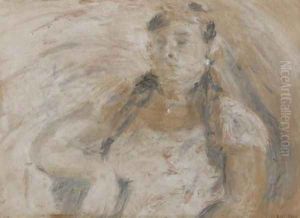Armando Julio Reveron Paintings
Armando Julio Reverón was a prominent Venezuelan painter, born on May 10, 1889, in Caracas. He is widely recognized for his unique contribution to Latin American art, especially for his innovative techniques and his exploration of light and shade. Reverón is often considered one of the first Latin American artists to anticipate some aspects of modern expressionism and abstraction.
Reverón's early life was marked by personal tragedy; he lost both of his parents at a young age and was raised by his aunt and uncle. His artistic talent became apparent early on, and he pursued formal training at the Academy of Fine Arts in Caracas. After his education in Caracas, Reverón continued his studies in Spain and France, where he was exposed to the works of European masters and the emerging avant-garde movements. These experiences significantly influenced his artistic development.
Upon returning to Venezuela, Reverón settled in the coastal town of Macuto, where his work began to take a distinctive turn. He became deeply fascinated by the tropical light and landscape of his surroundings, which led him to experiment with unconventional materials and techniques. His paintings from this period often depict the seashore, local inhabitants, and still lifes, characterized by a muted color palette and an emphasis on the interplay between light and shadow. Reverón's work during this time reflects a transition from impressionism towards a more expressionistic style.
In the 1930s, Reverón's mental health began to decline, a factor that further influenced his artistic output. He constructed a unique environment around him, known as 'El Castillete' (the little castle), which served both as his home and studio. Here, he created life-size dolls and objects, which became motifs in his later works. These dolls often appeared in his paintings, serving as eerie, haunting figures that contributed to the enigmatic quality of his art.
Throughout his life, Reverón remained relatively isolated, focused on his art, and lived modestly. Despite his reclusion, his work garnered attention and was exhibited in several noteworthy venues, including the Museum of Modern Art in New York. However, it was not until after his death on September 18, 1954, that his contributions to the art world began to be fully recognized and appreciated. Today, Armando Reverón is celebrated as a pivotal figure in Venezuelan art and as an artist who pushed the boundaries of painting with his innovative approach to capturing light and form.


